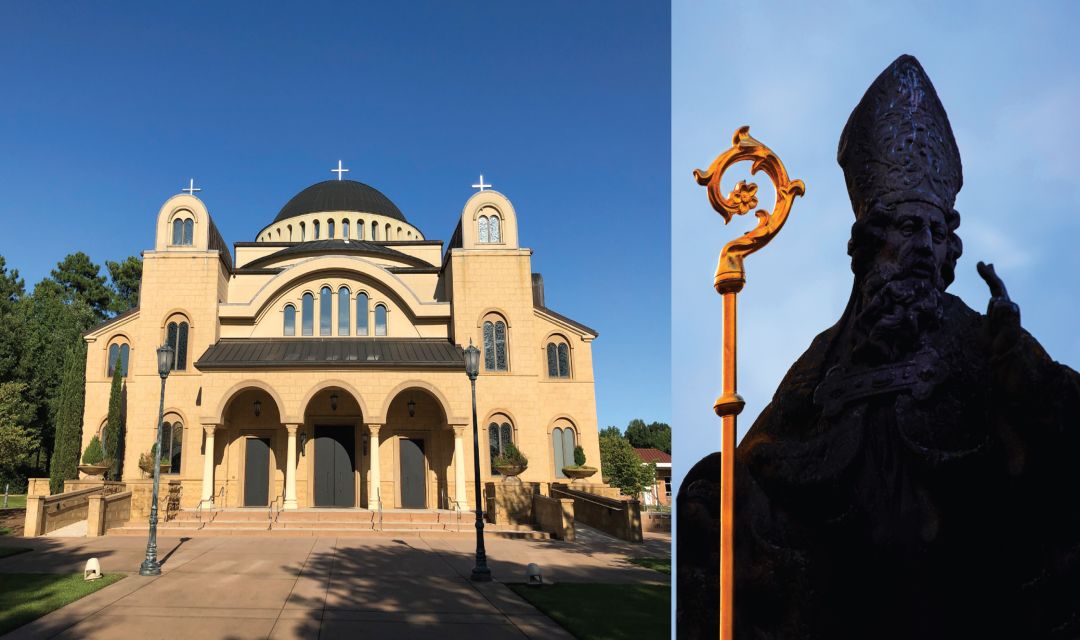This article first appeared in the the Ask Hank column of the Christian Research Journal, volume 44, number 3 (2021). For more information about the Christian Research Journal, click here.
For the first millennium of church history, there was essentially one orthodox New Testament faith rooted in seven ancient ecumenical councils. This may well have remained so had it not been for the bishop of Rome assuming dominance and, apart from an ecumenical council, altering the universal creed of the church. Since the Great Schism (1054), Catholicism has deviated from Orthodoxy in at least three significant ways.
First, Roman Catholicism forwards the notion that in the intermediate state after death, there are certain sins that can be atoned for by way of temporal punishment in purgatory. Orthodoxy considers the notion of purgation to be a late innovation lacking precedence in both Scripture and the teachings of the Fathers. In distinction to the Catholic idea of purgatory, the Orthodox community views the intermediate state as a foretaste of either eternal reward or eternal punishment, both of which are ultimately fixed on the Day of Judgment.
Furthermore, Catholicism and Orthodoxy are divided on the validity of papal infallibility (the idea that when the pope speaks ex cathedra — “from the chair”— he does so infallibly). Case in point: in 1950, Pope Pius XII dogmatized the widely held view that Mary “having completed the course of her earthly life, was assumed body and soul into heavenly glory.”1 Orthodoxy resists such unilateral dogmatization. From the Orthodox perspective, papal infallibility — defined during the first Vatican council in 1870 — has no basis in the creeds and confessions of the historic Christian faith — and thus is anathema.
Finally, Orthodoxy considers the Immaculate Conception — defined by Pope Pius IX in the 1854 bull Ineffabilis Deus — an unwarranted innovation. According to this Catholic dogma, from the moment of conception, Mary was kept free from the stain of all original sin. While Orthodoxy venerates Mary, they hold that she was born with the same broken nature as all other human beings.
In sum, unlike Protestantism, which shares a common history and geography with Catholicism, Orthodoxy was not a part of the Western narrative. They did not have a Reformation, did not engage in the Crusades, did not participate in the selling of indulgences, and did not subscribe to such dogmas as limbo or the celibacy of the priesthood. Despite such differences, a growing number of Orthodox and Catholic believers today consider themselves to be two lungs within the same body.
What Is Wrong with Purgatory?
As noted, Roman Catholicism teaches that believers incur debts that must inevitably be satisfied in purgatory “before the gates of heaven can be opened.”2 While purgatory is not equivalent to a second chance for unbelievers, it is nonetheless decidedly unbiblical.
First, the doctrine of purgatory undermines the sufficiency of Christ’s atonement on the cross. Scripture declares that Christ, through “one sacrifice…has made perfect forever those who are being made holy” (Heb. 10:14 NIV; see also 1:3). Thus, we can rest assured that Christ received in His own body all the punishment we deserved, absolutely satisfying the justice of God on our behalf (Rom. 3:25–26; 2 Cor. 5:19, 21; 1 Pet. 3:18; 1 John 2:2). When Jesus cried out from the cross, “It is finished!” (John 19:30 NIV), He was in effect saying, “The debt has been paid in full.”
Furthermore, Roman Catholicism clearly undermines the seriousness of sin by forwarding the notion that there are venial sins that can be atoned for through temporal punishment in purgatory. In reality, as the Bible makes clear, all our transgressions and iniquities are sins against a holy, eternal God (Ps. 51:4). And as such, they rightly incur an eternal rather than a temporal debt (Ezek. 18:4; Matt. 5–7; Rom. 6:23; James 2:10).
Finally, while purgatory was officially defined by the Council of Florence (1439) and officially defended by the Council of Trent in the sixteenth century, nowhere is purgatory officially depicted in the canon of Scripture. As The New Catholic Encyclopedia readily acknowledges, “The doctrine of purgatory is not explicitly stated in the Bible.”3 Thus, Catholicism is forced to appeal to late traditions of the Fathers rather than the testimony of the Father — who through His Word has graciously provided salvation by grace through faith and repentance in Christ (Mark 1:14–15; Luke 13:3; Acts 17:30; Rom. 4:2–8, 5:1, 11:6; Eph. 2:8
—Hank Hanegraaff
Hank Hanegraaff is president of the Christian Research Institute and host of the Bible Answer Man broadcast and the Hank Unplugged podcast. He is the author of more than twenty books, including Truth Matters, Life Matters More: The Unexpected Beauty of an Authentic Christian Life (W Publishing Group, 2019).
NOTES
- Munificentissimus Deus 44, https://www.vatican.va/content/piusxii/en/apost_constitutions/documents/hf_p-xii_apc_19501101_munificentissimus-deus.html.
- Council of Trent, Sixth Session, Canon 30.
- New Catholic Encyclopedia, 11:1034, quoted in Norman L. Geisler and Ralph E. MacKenzie, Roman Catholics and Evangelicals: Agreements and Differences (Grand Rapids: Baker Books, 1995), 334.
- This article is adapted from Hank Hanegraaff, The Complete Bible Answer Book — Collector’s Edition, Revised and Updated (Nashville: Thomas Nelson, 2016), 367–68, 568–69.









